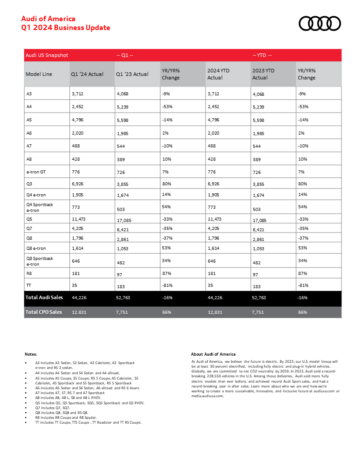Sign up for daily news updates from CleanTechnica on email. Or follow us on Google News!
Aluminum is an example of a material that has seen rapid growth in demand in recent years, and that demand has been met by expanded primary production. Aluminum has a density of 2.7 kg/dm3 at room temperature, which is about one-third of the density of iron and steel. With proper alloying and microstructure, as described in the Journal of Sustainable Metallurgy, a high strength-to-weight aluminum ratio can be achieved — along with great flexibility for efficient formability — into complex shapes using contemporary design features.
But production of the group of metals that includes aluminum stands for 40% of all industrial greenhouse gas (GHG) emissions. Its production is characterized as energy intensive, as its processes require significant electrical energy for their operation. This is different from, for example, iron production, which runs mostly on the chemical energy in the reduction agents used in the process and does not require much electrical energy.
The world needs a low carbon future. Even though international goals for industrial metallurgical processes and their emissions have been set, these emissions continue to rise. It’s because of expanding infrastructure development as the global middle class becomes more firmly established.
Aluminum occurs in nature in the form of chemically very stable compounds, in particular oxides. The raw material for its production, alumina (Al2O3), is refined from bauxite, which is an ore mined from strip mines. The production process also requires carbon anode production, electrolysis, casting, and secondary metal treatment. Aluminum’s carbon footprints are composed of direct emissions from its production process, the raw materials for the production processes, and the indirect emissions that are inferred when producing the electrical energy used to power the production processes.
Projects Aim to Decarbonize Aluminum & Other Metallurgy Industries
Emerging low carbon technologies are likely to be more costly than the mature technologies in the short term, and, so, governments must step in with climate policies and incentives in place for this industrial decarbonization to be an economical possibility.
The US Federal government seems to recognize this important aspect of decarbonization. Last week the US Department of Energy (DOE), at the direction of the Biden-Harris administration, announced up to $6 billion for 33 projects across more than 20 states to decarbonize energy-intensive industries, reduce industrial GHG emissions, support good-paying union jobs, revitalize industrial communities, and strengthen the nation’s manufacturing competitiveness. The projects will focus on the highest emitting industries where decarbonization technologies will have the greatest impact, including aluminum and other metals.
Here are some of the demonstration projects that zoom in on aluminum and metals, which are on-going initiatives aimed at reducing the process related emissions. They comprise a primary task on the path towards carbon neutrality and eventual decarbonization.
Green Aluminum Smelter, Kentucky or Ohio/Mississippi River Basins: Up to $500 million, Century Aluminum Company
The Green Aluminum Smelter project, led by Century Aluminum Company, plans to build the first new US primary aluminum smelter in 45 years. Upon completion, the smelter would double the size of the current US industry while avoiding an estimated 75% of emissions from a traditional smelter due to its state-of-the-art, energy efficient design and use of carbon free energy. The high purity aluminum produced from this facility is suitable for national defense, electric vehicles, semiconductors, building and construction, and green energy applications. This project represents a major capital injection for the primary aluminum industry, enabling the onshoring of supply chains for critical materials.
Low Carbon SmartMelt Furnace Conversion, Ravenswood, West Virginia: Up to $75 million, Constellium
The Low Carbon SmartMelt Furnace Conversion project, led by Constellium, proposes to deploy a first-of-a-kind zero carbon aluminum casting plant in the US at its Ravenswood, West Virginia, facility. This aluminum rolling facility, which is one of the largest in the world, supplies material to the aerospace, defense, marine, and transportation sectors. The project would install low emissions SmartMelt furnaces that can operate using a range of fuels, including clean hydrogen. In addition to reducing carbon emissions, the project would improve air quality and worker safety.
Nexcast — Next Generation Aluminum Mini Mill, Fort Lupton, Colorado: Up to $22.3 million, Golden Aluminum
The Nexcast — Next Generation Aluminum Mini Mill project, led by Golden Aluminum, plans to upgrade Golden Aluminum’s Fort Lupton, Colorado facility using the Nexcast process to reduce natural gas consumption, improve process efficiency, and recycle 15% more mixed grade aluminum scrap. The upgrades would allow the facility to produce aluminum products for electric vehicle and other clean energy technology applications. In addition to reduced emissions, this project would be highly replicable among other US producers and may help solidify the US as a leader in decarbonized secondary aluminum production.
Zero Waste Advanced Aluminum Recycling, Wabash, Indiana: Up to $67.3 million, Real Alloy Recycling
The Zero Waste Advanced Aluminum Recycling project, led by Real Alloy Recycling, plans to construct the first zero waste salt slag recycling facility in the US and the most energy efficient facility of its kind in Wabash, Indiana. Currently, 95% of secondary waste ends up in a landfill. This project aims to build a processing plant on the back end of an existing aluminum recycling facility and enable the normally landfilled salt slag components to be recycled back into the aluminum recycling process or beneficially used in other industries such as cement. This project would improve aluminum circularity that Real Alloy Recycling estimates to be 95% less carbon intensive and push the US position as a world leader in secondary aluminum production.
Advanced Copper Recycling Facility, Shelbyville, Kentucky: Up to $270 million, Wieland North America Recycling
The project plans to expand its US recycling capacity and capabilities through advanced copper scrap metal processing technology. The project enables the recycling of a diverse mix of copper scrap and other metals, turning it into high purity copper suitable to support multiple applications including electric vehicles and semiconductors. This endeavor aims to significantly reduce carbon emissions, potentially establishing the lowest carbon footprint globally for high end copper applications. Since the copper supply chain is expected to almost double by 2035, the project is well-timed, driven by trends including electric vehicle adoption, connected smart electronic devices, and the broader automation, electrification, and digitization of industry.
Have a tip for CleanTechnica? Want to advertise? Want to suggest a guest for our CleanTech Talk podcast? Contact us here.
Latest CleanTechnica TV Video
[embedded content]
Advertisement
CleanTechnica uses affiliate links. See our policy here.
- SEO Powered Content & PR Distribution. Get Amplified Today.
- PlatoData.Network Vertical Generative Ai. Empower Yourself. Access Here.
- PlatoAiStream. Web3 Intelligence. Knowledge Amplified. Access Here.
- PlatoESG. Carbon, CleanTech, Energy, Environment, Solar, Waste Management. Access Here.
- PlatoHealth. Biotech and Clinical Trials Intelligence. Access Here.
- Source: https://cleantechnica.com/2024/03/31/aluminum-metals-may-invigorate-the-marketplace-after-new-demonstration-grants/
- :has
- :is
- :not
- :where
- $UP
- 15%
- 2%
- 20
- 2035
- 33
- 400
- 45
- 7
- 95%
- a
- About
- achieved
- across
- addition
- administration
- Adoption
- advanced
- Advertise
- Aerospace
- Affiliate
- After
- agents
- aim
- aimed
- aims
- AIR
- All
- allow
- Alloy
- almost
- along
- also
- america
- among
- an
- and
- announced
- applications
- ARE
- AS
- aspect
- At
- Automation
- avoiding
- back
- BE
- because
- becomes
- been
- broader
- build
- Building
- by
- CAN
- capabilities
- Capacity
- capital
- carbon
- carbon emissions
- carbon footprint
- Carbon Neutrality
- casting
- cement
- Century
- chain
- chains
- characterized
- chemical
- class
- clean
- clean energy
- cleantech
- Cleantech Talk
- Climate
- Colorado
- Communities
- company
- competitiveness
- completion
- complex
- components
- composed
- connected
- construct
- construction
- consumption
- contemporary
- content
- continue
- Conversion
- Copper
- costly
- critical
- Current
- Currently
- decarbonization
- decarbonize
- Defense
- Demand
- demonstration
- density
- Department
- Department of Energy
- Department Of Energy (DOE)
- deploy
- Design
- Development
- Devices
- different
- digitization
- direct
- direction
- diverse
- DOE
- does
- double
- driven
- due
- efficiency
- efficient
- Electric
- electric vehicle
- electric vehicles
- electrification
- Electronic
- embedded
- Emissions
- enable
- enables
- enabling
- end
- endeavor
- ends
- energy
- energy intensive
- established
- establishing
- estimated
- estimates
- Ether (ETH)
- Even
- eventual
- example
- existing
- Expand
- expanded
- expanding
- expected
- Facility
- Features
- Federal
- Federal government
- firmly
- First
- Flexibility
- Focus
- Footprint
- For
- form
- Fort
- Free
- from
- fuels
- future
- GAS
- generation
- GHG
- Global
- Globally
- Goals
- Golden
- Government
- Governments
- grade
- grants
- great
- greatest
- Green
- green energy
- greenhouse gas
- Group
- Growth
- Guest
- Have
- help
- High
- highly
- HTTPS
- hydrogen
- Impact
- important
- important aspect
- improve
- in
- In other
- Incentives
- includes
- Including
- Indiana
- industrial
- industries
- industry
- inferred
- Infrastructure
- initiatives
- install
- intensive
- International
- into
- IT
- ITS
- Jobs
- Kentucky
- Kind
- largest
- Last
- leader
- Led
- less
- likely
- links
- Low
- lowest
- major
- manufacturing
- Marine
- marketplace
- material
- materials
- mature
- max-width
- May..
- met
- metal
- Metals
- Middle
- million
- mined
- mines
- mix
- mixed
- more
- most
- mostly
- much
- multiple
- must
- National
- Nations
- Natural
- Natural Gas
- Nature
- needs
- neutrality
- New
- news
- next
- NIH
- normally
- North
- north america
- of
- on
- ONE
- One-third
- operate
- operation
- or
- Other
- our
- particular
- path
- Place
- plans
- plant
- plato
- Plato Data Intelligence
- PlatoData
- player
- podcast
- policies
- policy
- position
- possibility
- potentially
- power
- primary
- process
- processes
- processing
- produce
- Produced
- Producers
- producing
- Production
- Products
- project
- projects
- proper
- proposes
- Push
- quality
- range
- rapid
- ratio
- Raw
- real
- recent
- recognize
- recycled
- recycling
- reduce
- Reduced
- reducing
- reduction
- refined
- related
- represents
- require
- requires
- Rise
- River
- Rolling
- Room
- runs
- Safety
- salt
- secondary
- Sectors
- see
- seems
- seen
- Semiconductors
- set
- shapes
- Short
- significant
- significantly
- since
- Size
- smart
- So
- solidify
- some
- stable
- stands
- state-of-the-art
- States
- steel
- Step
- Strengthen
- Strip
- such
- suggest
- suitable
- supplies
- supply
- supply chain
- Supply chains
- support
- sustainable
- Talk
- Task
- Technologies
- Technology
- term
- than
- that
- The
- The Projects
- the world
- their
- These
- they
- this
- though?
- Through
- tip
- to
- towards
- traditional
- transportation
- treatment
- Trends
- Turning
- tv
- union
- Updates
- upgrade
- upgrades
- upon
- us
- US Federal
- use
- used
- uses
- using
- vehicle
- Vehicles
- very
- Video
- virginia
- want
- Waste
- week
- West
- West Virginia
- when
- which
- while
- will
- with
- worker
- worker safety
- world
- would
- years
- youtube
- zephyrnet
- zero
- zoom











